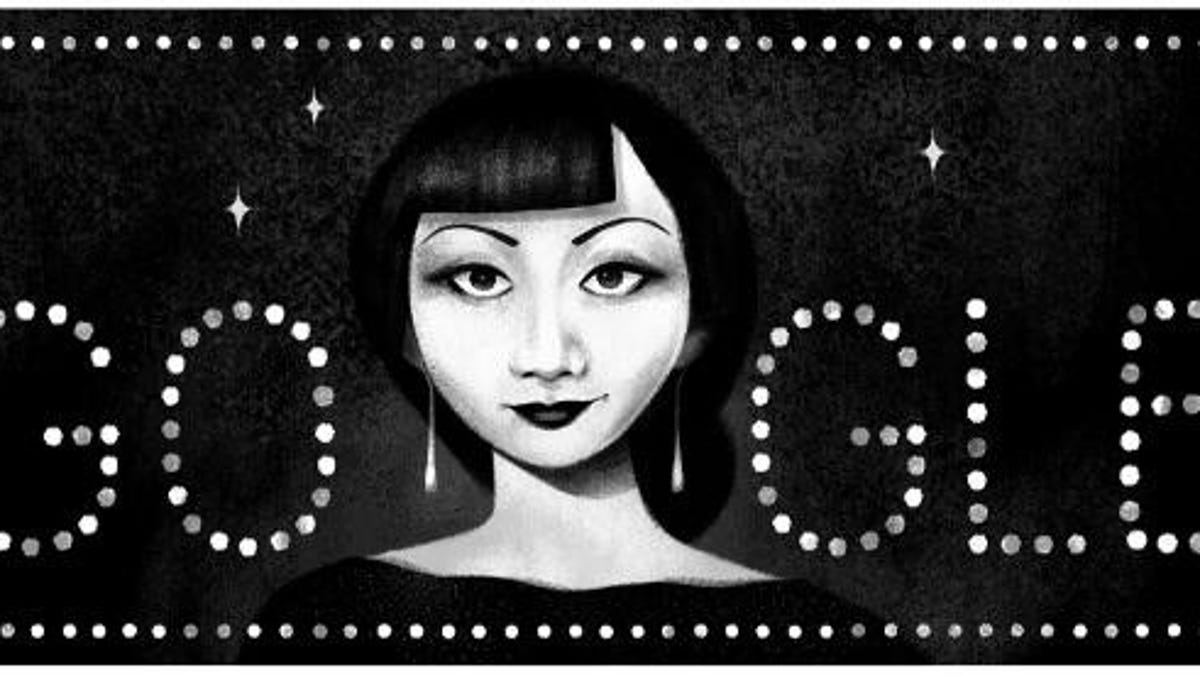Google Doodle honors Anna May Wong, pioneering Chinese-American movie star
Considered Hollywood's first Chinese-American movie star, Wong helped break down stereotypes amid overt discrimination.
Ninety-seven years ago Wednesday, a silent movie called The Toll of the Sea went into general release in movie theaters, giving movie audiences their first good look at Anna May Wong. It was the first leading role for Wong, an actress considered to be Hollywood's first Chinese-American movie star.
Over the course of her varied career that spanned silent movies, sound movies, stage and TV, Wong's portrayals of Chinese characters helped combat stereotypes among white audiences at a time of overt racism and discrimination. To honor her contribution to movies and the Chinese community, Google dedicated a slideshow Doodle to Wong that features snapshots of her life and some of the more famous characters she portrayed in the more than 50 movies she appeared in over her career.
Wong was born Wong Liu Tsong on Jan. 3, 1905, near Chinatown in Los Angeles. When not in school or working at her father's laundry, Wong would hang around film crews as movies were being shot in her neighborhood, begging filmmakers to cast her in movies. By the age of 11, she had chosen her stage name -- Anna May Wong -- and a few years later landed her first role as an uncredited extra in the 1919 movie The Red Lantern.
Her first starring role came three years later in The Toll of the Sea, and her performance garnered praise from Variety for her "extraordinarily fine" acting and The New York Times, which gave her a glowing review that said "she should be seen again and often on the screen."
Despite the positive reviews, racial barriers prevented US filmmakers from offering her anything but small, supporting roles based on racial stereotypes. Tired of being passed over for leading roles, Wong moved to Europe in 1928. There, she made 1929's Piccadilly, her last silent movie and her first leading role in an English movie, as well as her first talkie in 1930, The Flame of Love. She also appeared on the stage with a young Laurence Olivier.
After her return to Hollywood in 1930, Wong was cast opposite her close friend Marlene Dietrich in 1932's Shanghai Express, turning in a performance that many film historians judge as being better than Dietrich's. She would make several B pictures during the 1930s that portrayed Chinese and Chinese-Americans in a positive light, but she put her career on hold during World War II to support the Chinese cause against Japan.
In the 1950s, Wong starred in a short-lived detective series written expressly for her called The Gallery of Madame Liu-Tsong, which drew on Wong's birth name for that of the title character. She also made guest appearances in a handful of TV series.
She put the first rivet in the Grauman's Chinese Theatre in the 1926, but she wasn't invited to leave prints in the cement. Her contribution to film was marked with a star on the Hollywood Walk of Fame in 1960.
Wong died of a heart attack in 1961 at the age of 56.


